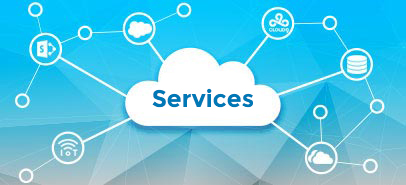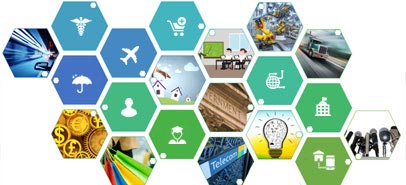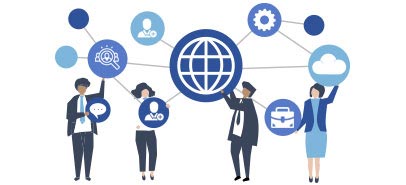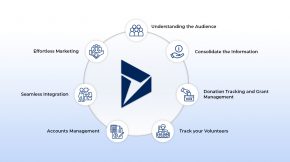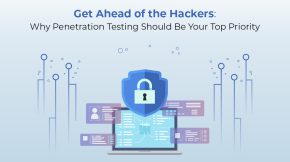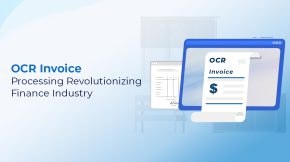Why 2025 Is the Year Every Business Needs Generative BI
It’s because while your team prepares dashboards, companies like Uber are already acting on their next idea. Their approach cuts query time from 10 minutes to just 3, handling 1.2 million queries monthly and saving more than 140,000 analyst hours every month (source). This is not just faster; it changes how decisions are made. It is with generative business intelligence.
What Makes Generative Business Intelligence Different
Traditional business intelligence can feel slow and frustrating. Business users often wait days for answers. Opportunities pass by while reports are in progress.
Generative BI offers something different. Instead of needing to learn complicated software, you just ask questions using plain language and get meaningful insights back almost instantly. This is a real shift for modern enterprises. Analytics becomes accessible to every team member, including non-technical users.
Generative business intelligence uses natural language processing and advanced analytics. The interface is intuitive. When you want to know about customer behavior, you don’t need to write technical queries. Results appear in formats that make sense for your business operation.
How Natural Language Improves Data Exploration
Imagine saying, “Which marketing campaigns helped us most last quarter?” The answer comes in seconds. You get a coherent report and relevant visualizations that show you the full picture. Real-time insights mean you respond faster.
This conversational approach lowers barriers. Marketing teams can check campaign performance right away. Finance can produce a report on spending quickly. Teams get access to insights without waiting for technical skills or manual intervention.
GoDaddy saw big changes with this approach. Data preparation time dropped from over a week to less than four days. Data exploration that once took a day happens now in under 10 minutes, with visualization creation that makes use of best-fit charts, bar charts, or pie charts, all automatically.
The Power Behind Generative AI for Business Intelligence
Language models are at the core of generative BI. These systems understand context and translate business questions into the analytical steps needed for deeper insights.
You don’t need to know exactly which data to ask for. Generative AI suggests follow-up questions, spots data anomalies, and gives information in ways that match your role. The AI does the heavy lifting. It manages complex analysis, dynamic visualizations, and even predictive analytics, so you can focus on decisions.
This autonomous analytics powerhouse is about reducing friction. You get quick insights without needing to understand every technical detail.
Real-Time Decision Making in Practice
Speed matters. Associated Press moved from 300 to 4,400 automated reports per quarter (source). That’s more than ten times the output. Report generation that took hours now takes minutes. This lets people focus on more important work and improves user experiences.
Real-time data processing helps every department. Teams share a single source of truth. Strategic decision-making is based on current data, not week-old reports.
Key Benefits That Transform Business Operations
Immediate Access to Complex Analytics
- Plain language queries, so technical training is not required
- Self-serve analytics for every department
- Quick insights from vast amounts of data
Better Decision Quality
- AI-driven insights help find patterns you might miss
- Predictive analytics support forward-looking insights
- Context-aware insights review multiple factors at once
Efficiency for Everyone
- Automated dashboards reduce repetitive work
- Seamless integration with cloud storage and existing systems
- Less need for specialized technical personnel
Financial outcomes are clear. Organizations using generative AI see cost reductions up to 55% and 63% report faster innovation (source). These are not outliers; they’re becoming standard for those who use sophisticated analytics and advanced capabilities.
Industry Applications with Measurable Results
Retail and Customer Experience
Retailers use gen bi to understand shopping patterns and personalize experiences. The AI examines purchase history, seasonality, and demographics. This helps teams predict what customers want.
Ziplingo Marketing used generative business intelligence to predict churn. They saw a 25% drop in churn and a 40% increase in campaign ROI (source). What once took hours now takes minutes, which means more time for strategic projects and better marketing efforts.
Healthcare and Operational Excellence
Healthcare providers use generative BI to improve patient care and manage resources. The system analyzes records, appointments, and performance data. This means better outcomes for patients and improved operational efficiency.
Hospitals can now predict when patients are likely to be readmitted. Staff schedules can be adjusted to reduce risks. Equipment failures can be predicted before they happen. The shift to actionable insights means that healthcare teams can move from reacting to problems to preventing them.
Finance and Risk Management
Banks use generative business intelligence to spot fraud and assess credit risks. The AI reviews transactions, market conditions, and regulations. This means evidence-based decisions are made faster.
Loan applications can be reviewed in real time. Insurance companies can predict claim trends. Investment firms can spot opportunities quickly. This helps drive informed decision-making in high-stakes environments.
Implementation Strategies That Work
Building Your Generative BI Foundation
Start by setting clear business goals. Think about the questions your teams ask most. Focus on decisions that need immediate answers. This ensures your generative BI setup meets real needs.
Review your current data systems. Most organizations find their existing foundational layers are ready for genbi, with no need for complete reinvention. Integration points can often be found with little effort.
Overcoming Common Challenges
Data Quality
Your generative BI system relies on good data. Set standards for data governance to keep your information accurate and consistent.
User Adoption
The success of genbi comes from people using it. Pilot projects help show immediate value and reduce resistance to adoption.
Security
Genbi systems need to protect sensitive data. Make sure you have strong security controls and manage user permissions carefully.
Working with experts can make the process easier. Data science consulting gives you support for a user-friendly implementation and helps avoid common mistakes.

The Future of Data-Driven Decision Making
Generative BI is not just a new tool; it changes who can use data. It puts analytics in the hands of everyone, not just specialists. Business users become part of the conversation, not just recipients of reports.
As artificial intelligence in business intelligence continues to grow, organizations that use genbi will see more benefits. They will find new opportunities and avoid mistakes others miss.
Your advantage does not come from simply having more data, but from getting meaningful insights quickly. Companies that use generative AI tools are already moving ahead.
Transforming Your Analytics Approach
The facts are clear. Companies using generative AI find new insights 48% more often, cut costs, and speed up innovation (source). These gains build on each other over time.
Your path to generative business intelligence starts with knowing what you want to change. The right technology is already here. It helps you discover, analyze, and act on information.
The real question is whether your organization will lead or follow. Early adopters build advantages that are hard for others to catch up with later. As expectations change, those who act now set the pace.
Success is not just about new software. It’s about thinking differently, using tools that make complex analyses simple to ask for and easy to act on. This shift makes your organization ready for whatever comes next.


